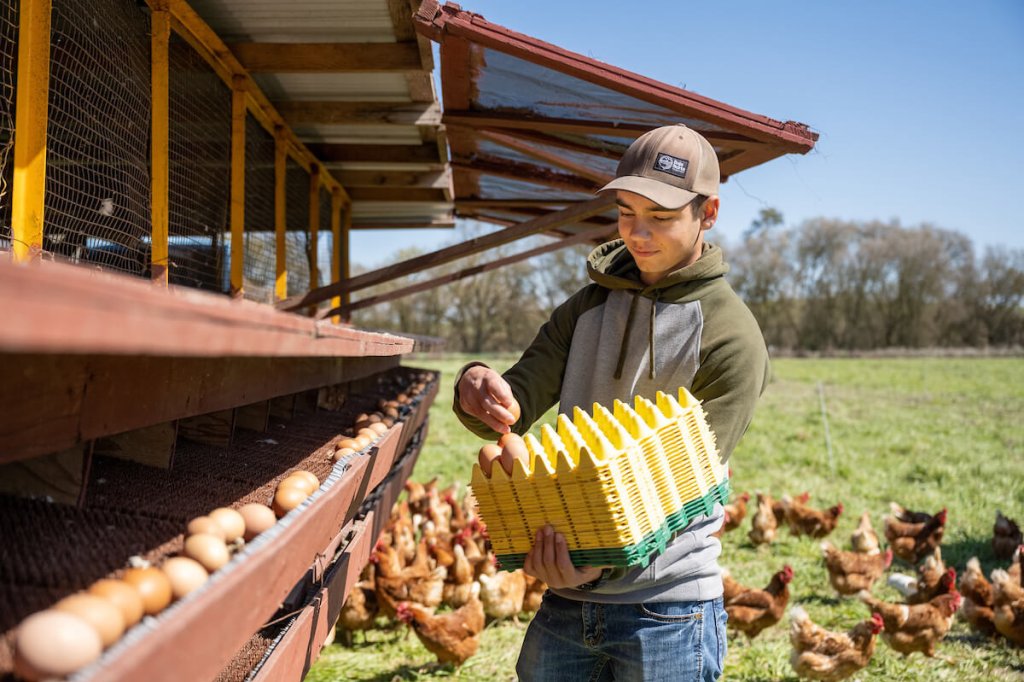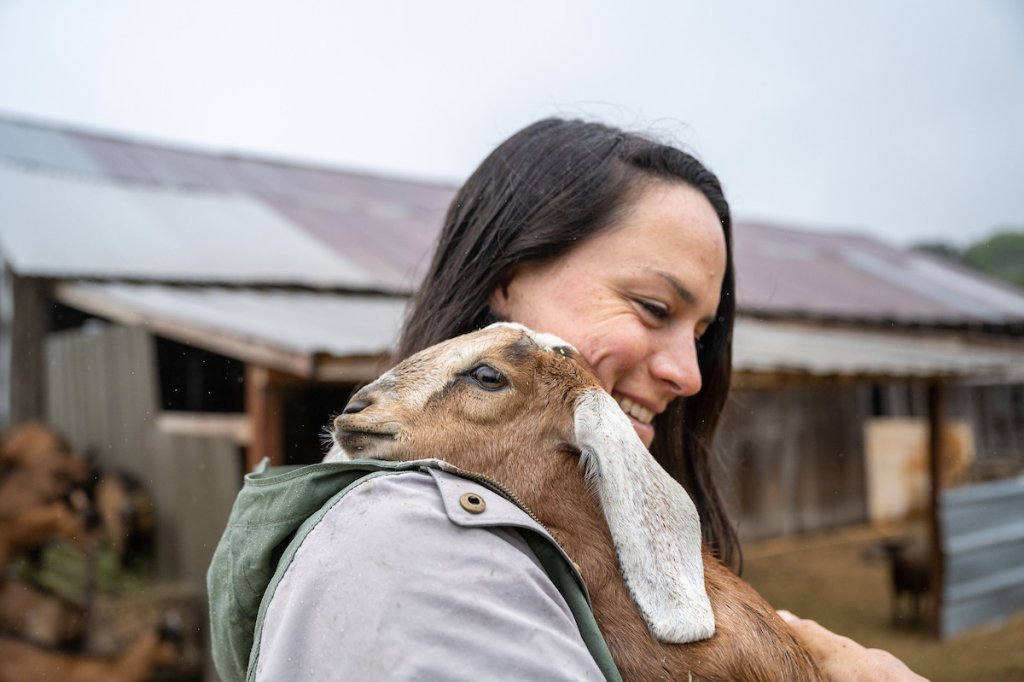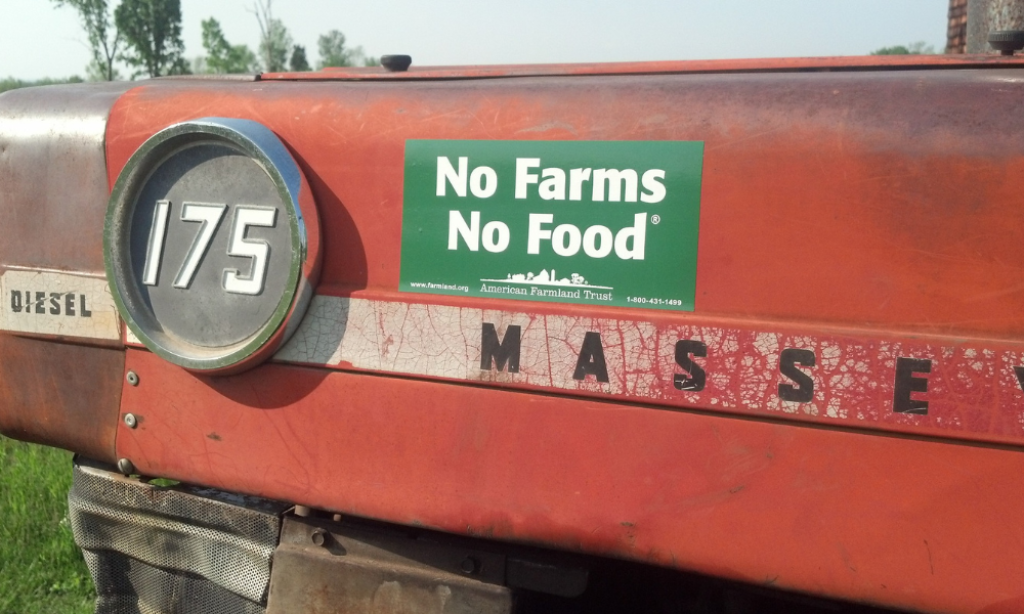What’s at stake when we pave over, fragment and otherwise fail to protect Maryland’s farmland from the disruptions of development?
American Farmland Trust’s new report demonstrates how developing farmland puts food security, the environment and our way of life in jeopardy.
5/20/2020, WASHINGTON, DC — Millions of acres of America’s agricultural land were developed or converted to uses that threaten farming between 2001 and 2016, according to “Farms Under Threat: The State of the States,” a new report by American Farmland Trust. The report’s Agricultural Land Protection Scorecard is the first-ever state-by-state analysis of policies that respond to the development threats to farmland and ranchland, showing that every state can, and must, do more to protect their irreplaceable agricultural resources.
“The State of the States” report shows the extent, location, and quality of each state’s agricultural land and tracks how much of it has been converted in each state using the newest data and the most cutting-edge methods. The Agricultural Land Protection Scorecard analyzes six programs and policies that are key to securing a sufficient and suitable base of agricultural land in each state and highlights states’ efforts to retain agricultural land for future generations. It offers a breakthrough tool for accelerating state efforts to make sure farmland is available to produce food, support jobs and the economy, provide essential environmental services, and help mitigate and buffer the impacts of climate change.
Maryland ranks high on policy response, yet its best lands are still threatened
Maryland is an agricultural state with more than a 1.5 million acres of “Nationally Significant” agricultural land, or land best suited for growing food. Agriculture is the largest commercial industry in Maryland, employing 350,000 people and contributing some $8.25 billion annually to the economy. The main agricultural commodities in Maryland in 2019 were poultry and eggs, grain, horticulture, milk production, cattle and calves, and vegetables and melons. Along with raising crops and animals, Maryland farmers earn income from agricultural tourism. In 2017, 300 farms made 9% of their income through these services. Agriculture is an important economic engine for Maryland.
Between 2001 and 2016, over 100,000 acres of Maryland’s farmland were developed or threatened, nearly 60,000 of which were “Nationally Significant” land. Threats to land are also threats to the economy—this level of development represents a potential loss of $7.4 million in annual revenue.
Hots spots for development were around Hagerstown, Frederick, Columbia and just outside the Capitol Beltway.
However, the threat is more than just urban sprawl. Maryland’s agricultural land is disproportionately threatened by a new, more insidious kind of development discovered by AFT through this research, termed Low-Density Residential, or LDR, land use.
Roughly 71% of the land developed or threatened in Maryland fell into this category. LDR development is insidious because it is not always immediately visible to communities and policymakers and therefore has yet to provoke a policy response. In Maryland, LDR development is 10 times more likely to be converted to urban high-density land use than other agricultural land.
LDR land use compromises opportunities for farming and ranching, making it difficult for farmers to get into their fields or travel between fields. New residents not used to living next to agricultural operations often complain about farm equipment on roads or odors related to farming. Retailers such as grain and equipment dealers, on which farmers rely, are often pushed out. Farmers can be tempted to sell out for financial reasons, or because farming just becomes too hard in the circumstances. And lastly–but importantly–as older farmers near retirement they sell their properties, too often to non-farmers. This means that new and beginning farmers have a hard time finding land, threatening the very future of agriculture. More often than not, the land prices in these areas have been driven up by the encroaching development making it impossible for new farmers to afford to buy a farm.
Committed state action is an essential response to the loss of farmland and ranchland. Pursuing multiple approaches and linking them together is the most effective path. Maryland was one of the top 12 most proactive states in implementing a mix of approaches. Most significantly, Maryland linked programs to enhance effectiveness and created state guidelines to ensure local actions achieve broader goals.
Maryland scored high on the Agricultural Land Protection Scorecard, ranking third in the nation. Maryland’s Agricultural Land Preservation Foundation and Rural Legacy programs are among the most effective Purchase of Agricultural Conservation Easement programs in the country. Maryland has also implemented important planning policies requiring local comprehensive planning. It provides property tax relief and runs the publicly supported Maryland FarmLINK program to connect farmland sellers with farmland buyers.
“Maryland state and county planning and zoning staff, the Maryland Agricultural Land Preservation Foundation, the Maryland Agricultural and Resource Based Industry Development Corporation, land trusts, and others have had incredible success in protecting Maryland’s treasured agricultural lands,” said Jamie Mierau, AFT Mid-Atlantic regional director. “But we face intense development pressure, and so we will have to continue to work together to aggressively preserve our farmland and keep farming viable and productive in Maryland.”
To sign up for a Farms Under Threat webinar about Maryland, click here.
For a brief summary of national results and connections with climate change, food security and the economy: National Media Release
##
American Farmland Trust is the only national organization that takes a holistic approach to agriculture, focusing on the land itself, the agricultural practices used on that land, and the farmers and ranchers who do the work. AFT launched the conservation agriculture movement and continues to raise public awareness through our No Farms, No Food message. Since our founding in 1980, AFT has helped permanently protect over 6.5 million acres of agricultural lands, advanced environmentally-sound farming practices on millions of additional acres and supported thousands of farm families.




